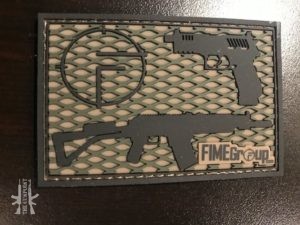While walking around SHOT Show this year, I couldn’t help but see the ads running for the “Last of Molot” and directing me to Booth 11217. With the prospect of the promise of free patch and a chance to check out the last of the VEPR’s, I couldn’t resist. As many of you know, this year the federal government put the final nail in the coffin for anyone wanted access to quality Russian firearms. The question is why and how did we get here. Let’s take those two questions in reverse order.

HOW DID WE GET HERE
On March 16, 2014 our favorite President (Barack Obama) issued Executive Order 13661 stating:
I, BARACK OBAMA, President of the United States of America, hereby expand the scope of the national emergency declared in Executive Order 13660 of March 6, 2014, finding that the actions and policies of the Government of the Russian Federation with respect to Ukraine—including the recent deployment of Russian Federation military forces in the Crimea region of Ukraine—undermine democratic processes and institutions in Ukraine; threaten its peace, security, stability, sovereignty, and territorial integrity; and contribute to the misappropriation of its assets, and thereby constitute an unusual and extraordinary threat to the national security and foreign policy of the United States.
In sum, President Obama decreed Russia’s conduct in the Ukraine created a “threat to the national security and foreign policy of the United States.” While I will leave foreign policymaking to those in Washington DC, Russian / Ukrainian relations have been tense since the dissolution of the Soviet Union but date back all the way to the 17th Century. Nevertheless, the two countries are currently involved in a military conflict which began in March 2014. It is this most recent conflict which lead to the above executive order and the implementation of economic sanctions against, among others, Kalashnikov Concern in 2014.
For those in the know, Kalshnikov Concern is the Russian defense company that originally brought you the Izhmash and Saiga rifles and shotguns. As such, when the sanctions were implemented in 2014 against Kalshnikov Concern its US market dried up and the value of those guns which made it to the US market prior to the sanctions increased exponentially. However, the sanctions were limited and did not include Kalshnikov Concern’s competitor Molot-Oruzhie. As such, Molot came into the US market to fill the ongoing need for high quality Russian firearms.
Why target Molot three years later in 2017
The question must then be asked, why target Molot three years later. The answer may surprise you. According to the United States Department of Treasury Molot was targeted based upon the following:

Molot-Oruzhie, OOO manufactures ordnance and accessories and is located in the Russian Federation. In 2016, previously-designated Kalashnikov Concern advised a foreign company to use Molot-Oruzhie, OOO to falsify invoices in order to circumvent U.S. and EU sanctions. Molot-Oruzhie is being designated for operating in the arms or related material sector of the Russian Federation and for acting or purporting to act for on behalf of, directly or indirectly, Kalashnikov Concern.
So, it appears that Kalashnikov Concern (an apparent competitor of Molot’s) advised an unidentified and unknown foreign company to use Molot to falsify invoices in order to circumvent the sanctions. It does not state Molot actually falsified invoices for Kalashnikov Concern nor does it state Molot ever circumvented the sanctions. Rather, the entire basis for adding Molot to the list of sanctioned entities three years later is because its competitor allegedly told a foreign company to see if Molot would falsify invoices. If this does not make any sense to you, you are not alone. Either way, if the advertising is true this year marks the “Last of the Molot” and the end of Molot firearms in the US so the question is – do you need one before they are gone?





Leave a Reply